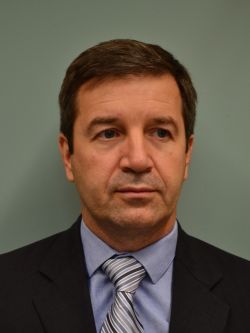Event Date/Time
Location
room 222
Series/Event Type
Since the first femtosecond laser was fired at MAE more than a decade ago, we leveraged nonlinear optics and ultrafast spectroscopy for the development of advanced optical diagnostics and remote sensing with applications in fields like aerospace, environment, medicine, and national security. In this talk, I will present several innovative solutions we developed and demonstrated for remote species detection and for optical diagnostics of gases and plasmas. A novel hybrid femtosecond/picosecond Coherent Anti-Stokes Raman Scattering (CARS) spectroscopy technique enabled standoff molecular detection and identification of trace species using single shot spectroscopy at kHz rate, as well as non-equilibrium thermometry. Our Femtosecond Laser Electronic Excitation Tagging (FLEET) velocimetry technique relies on femtosecond laser dissociation of nitrogen and subsequent delayed recombination for mapping flows. FLEET, hybrid CARS, and femtosecond Two-Photon Laser Induced Fluorescence (fs-TALIF) allowed first ever remote velocimetry, thermometry, and species measurements at kHz rate in large-scale hypersonics and low temperature plasma facilities. By tailoring the focusing of ultrafast lasers in atmospheric air, we succeeded to obtain backwards air lasing, where multi-photon dissociation and excitation lead to stimulated emission from the constituent atomic species (N, O, Ar, Kr). The strong coherent emission is an example of a mirror-less atomic laser which can aid remote atmospheric trace species detection and can even bend the light around the corner. Finally, I will show how nonlinear optics enables standoff measurement of the electric field, and how slow-light can be used for hyperspectral imaging without the use of a spectrometer.
Speaker Bio
